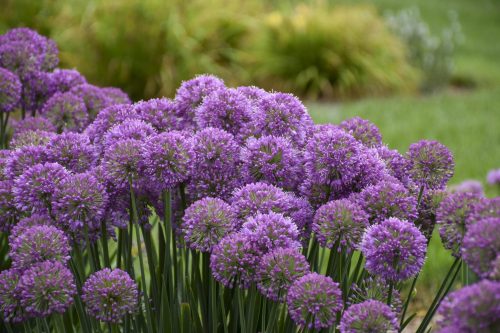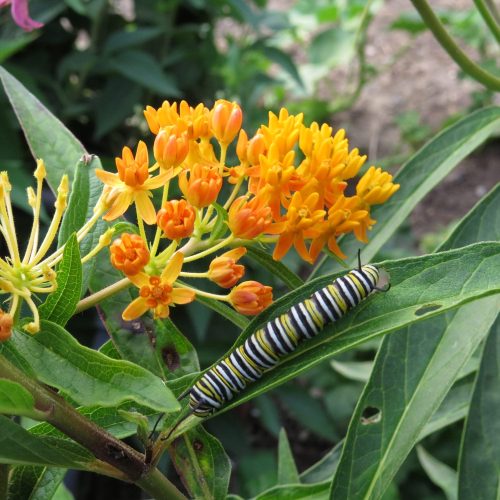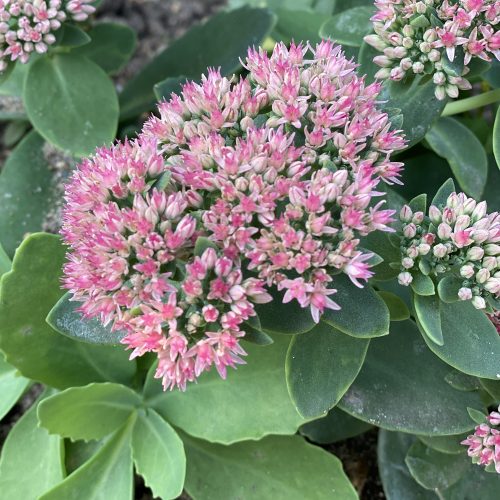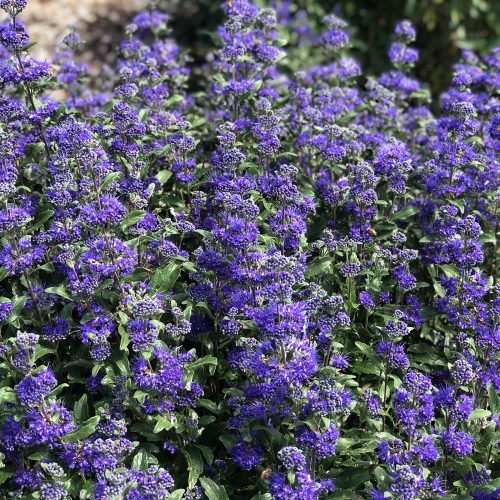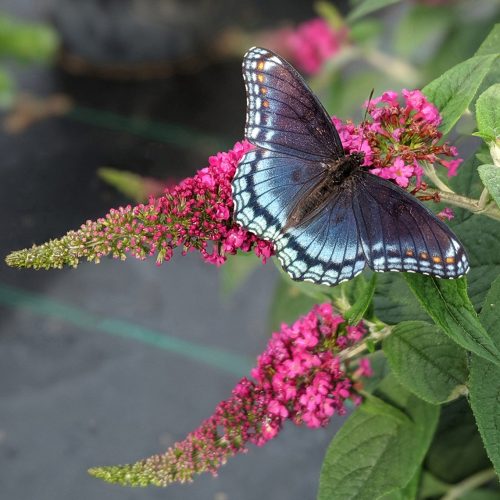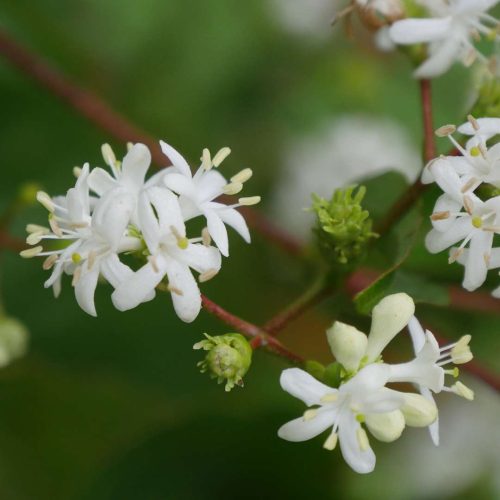It’s late August in Michigan and as I am sitting here looking out my window into my garden, I’m seeing an incredible number of bees whizzing by while a beautiful yellow Eastern swallowtail butterfly hangs upside down to feed on my six-foot tall ‘Uchida’ lilies. I am blessed to welcome so many pollinators into my garden and am puzzled when I hear people say they haven’t seen any butterflies this year. What are they growing in their gardens?
A sure way not to see many pollinators is to grow only evergreens and lawn grass, leave long gaps between the bloom times of your flowering plants, and provide no water source for bees, butterflies or birds. If you haven’t seen many pollinators this year, know that there are many things you can do to encourage these important creatures to call your garden home. We detail five of them in this blog.
As the days begin to shorten and the nights dip a few degrees cooler, nature seems to know that the end of the season is within sight. Bees and butterflies are feeding more feverishly than ever and are willing to share with one another. The other day, I counted three different species of bees plus a skipper
butterfly feeding on a single bunch of alliums at once. I imagined them saying to one another, “There’s plenty for everyone, friends. Come on over!”
Eight Plants Pollinators Are Loving Right Now
Here’s what plants pollinators are especially loving in the garden right now as the end of summer draws near
Ornamental Onion – Allium –
Summer blooming ornamental onions are an absolute magnet for all types of pollinating bees, butterflies, skippers and moths when in bloom from midsummer through late summer. They stand out near the front of the border and pair perfectly with autumn stonecrop. It’s a great plant for pollinators.
Zone 4-8, full sun to part shade, 15-20” tall
Japanese Anemone
Bumblebees and honeybees will visit your Japanese anemone flowers every day they are in bloom from late summer into fall. It’s amazing how such a big bee can milk every grain of pollen off a delicate anemone flower in just a few seconds. Easy access to the center of the flower makes them a big draw for pollinators.
Zone 4-8, full sun to part shade, height varies by variety
Milkweed
You know monarch butterflies depend on many species of milkweed as a host and food source, but pollinating bees and hummingbirds also enjoy its flowers. In late summer, swamp milkweed continues to put up new blooms every week until the days are finally too short. Silky seed pods follow the flowers.
Zone 3-9, full sun, height varies by species
Ornamental Oregano ‘Drops of Jupiter’
This new perennial is blowing us away in its ability to attract all sorts of interesting pollinators. On any given sunny day, you’ll find them enjoying the tiny pink blossoms that are held in clusters of deep purple calyxes at the tip of each stem. It is in peak bloom in late August in Michigan but will continue into the fall. It’s a great plant for pollinators.
Zone 4-9, full sun, 24” tall
Autumn Stonecrop – Sedum
Both tall upright and short mounding varieties of stonecrop are beginning to bloom here in Michigan in late summer. As soon as the first few flowers open, pollinating bees find their way over and will remain until the last little bloom dries up in late fall. It is one of the last perennials to feed the bees, butterflies,
skippers and moths before the end of the growing season.
Zone 3-9, full sun, height varies by variety
Bluebeard – Caryopteris
Caryopteris is one of the best kept secrets in the shrub world, but we’re shouting about it from the rooftops! How many other shrubs bloom bright blue from August into October and attract pollinating bees, butterflies and hummingbirds like crazy? Every sunny garden needs at least one of these
magnificent plants.
Zone 5-9, full sun, 2-3’ tall
Butterfly Bush – Buddleia
The name says it all for this plant—it truly is a butterfly magnet. In Michigan, butterfly bushes are in peak bloom when the monarch butterflies pass through on their migration southward, providing sustenance for their long journey. It’s not uncommon to see several feeding on their long, fragrant flower panicles at once. If you are lucky, you might see a hummingbird stop by for a midday snack, too.
Zone 5-9, full sun, height varies by variety
Seven-Son Flower – Heptacodium –
This is a large shrub or small tree you’ll want to plant now because it takes some time to mature, but good things come to those who wait. A ten-year old specimen of a seven-son flower will be one of the most asked-about plants in your whole landscape. Small, white summertime blooms give way to huge, showy clusters of cherry red bracts that fool many people into believing they are the actual flowers. The entire canopy will be abuzz when in bloom, with many species of pollinating bees vying at once for a sip of its sweet nectar. It’s a fascinating plant to observe in nature.
Zone 5-9, full sun to part shade, 6-10’ tall
Want to learn more about gardening for pollinators? This article is a great resource.

